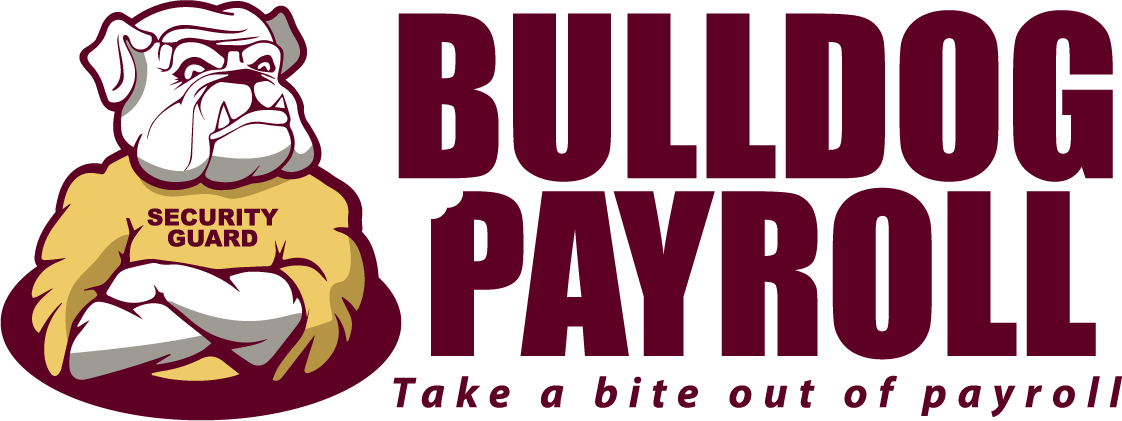Why Your Employee Onboarding Process Is Extremely Important from A Payroll Standpoint for Your Small Business
As a small business owner, are you wondering why you're losing employees too soon? Are payroll inaccuracies causing you headaches, or perhaps compliance issues seem like a minefield too complex to navigate? Could these issues be impacting the overall growth and profitability of your business? If your answer is “yes” to any of these questions, you might want to look closely at your employee onboarding process.
Being a small business owner is akin to being a master juggler. You're constantly balancing strategic planning, marketing initiatives, customer service, and, importantly, human resource management. However, amidst all these hats you wear, two areas of HR management often tend to take the backseat – employee onboarding and payroll management. But, what if these overlooked areas are the missing pieces of the puzzle to your small business success?
In this article, we will unlock the underestimated power of an effective onboarding process and its striking influence on payroll management. Join us as we dive into the significance of these processes and discover how, with the right approach, they can transform your small business's journey.
1. The Value of Effective Onboarding: Key Statistics
The onboarding process is a strategic approach that impacts your small business's productivity, employee satisfaction, and retention rates. Understanding this connection can help redefine your onboarding strategy.
Let's dissect some insightful research findings to appreciate the profound effects of a well-executed onboarding process:
- Employee Turnover and Onboarding: The correlation between employee turnover and onboarding cannot be ignored. A study conducted by the SHRM Foundation presents compelling data, showing that businesses with a comprehensive onboarding process can reduce their employee turnover by a staggering 50%. The consequence of high employee turnover is not merely a number; it reflects on increased recruiting costs, lost productivity, lower morale among existing staff, and the critical loss of company-specific skills and knowledge.
- New Hire Retention: Onboarding is also a key determinant in new hire retention. Glassdoor's research reveals that organizations that invest time and effort in an effective onboarding process enjoy an 82% retention rate among new hires. This is crucial for small businesses, as losing a newly hired employee can significantly set back progress and growth plans.
- Boost in Productivity: Furthermore, the same Glassdoor study also highlights that a robust onboarding process can lead to an over 70% increase in productivity. When new hires understand their roles, responsibilities, and the company culture from the get-go, they are likely to be more engaged, motivated, and productive.
In a nutshell, the impact of a robust onboarding process stretches beyond the first day or week of an employee's journey. It has long-lasting effects on employee turnover, retention, and productivity, making it an area of strategic importance for your small business.
2. The Onboarding-Payroll Connection
To appreciate the inherent connection between onboarding and payroll, we need to consider the range of information and procedures that both these processes encompass. The onboarding process is the first step in creating a comprehensive payroll profile for each employee. Let's delve deeper into how this integration takes place:
- Collection of Personal Information: During the onboarding process, you collect personal details such as name, address, contact information, and social security number. This data is not only crucial for your HR records but also forms the primary identification for payroll processing.
- Job Role and Salary: The onboarding process solidifies the new hire's role, title, department, and agreed-upon salary. This information directly feeds into the payroll system to ensure that each employee is compensated accurately for their specific role.
- Tax Withholdings: During onboarding, new hires complete necessary tax forms, such as the W-4 form in the U.S., which dictates how much federal income tax should be withheld from their paychecks. This critical tax information is instrumental in maintaining payroll accuracy and tax compliance.
- Benefits Enrollment: Onboarding is also the stage where employees enroll in company-sponsored benefits like health insurance, retirement plans, and more. The costs of these benefits can affect an employee's taxable income and net pay, so it's vital this data is correctly integrated into the payroll system.
In essence, the onboarding process sets the stage for efficient and accurate payroll management. Every piece of information collected, every form completed, and every agreement made during onboarding has a direct impact on payroll. Therefore, the significance of a well-executed onboarding process in relation to payroll cannot be underestimated.
3. Onboarding and Compliance: Navigating the Regulatory Landscape
When it comes to ensuring compliance with numerous regulations related to tax laws, labor standards, and employee rights, onboarding plays a significant role. Let's break down how onboarding and compliance intertwine and why they matter to your small business:
- Tax Laws: During the onboarding process, employees fill out critical tax documents that determine the amount of tax to be withheld from their paycheck. In the U.S., this includes forms like the W-4 and I-9. Any errors or omissions in these forms can lead to non-compliance with IRS regulations. For instance, an incorrect W-4 can result in under-withholding of taxes, leaving the employee with a hefty tax bill at the end of the year and potentially exposing your business to penalties.
- Labor Regulations: Onboarding is also the time when employees acknowledge and accept labor regulations such as overtime pay, minimum wage rules, and working hours. Failure to educate employees about these regulations during the onboarding process can lead to misunderstanding and non-compliance, potentially leading to labor disputes or penalties.
- Employee Rights: The onboarding process is the perfect time to educate employees about their rights regarding anti-discrimination policies, privacy, and workplace safety. Compliance in these areas is critical, and non-compliance can lead to legal issues, reputational damage, and loss of employee trust.
- The Financial Impact: Non-compliance with these regulations comes with financial implications. The IRS reported that in 2020, small businesses in the US paid an average penalty of $845 for late or incorrect payroll tax filings. This figure underscores the importance of getting payroll right from the start, which begins with an accurate onboarding process.
Therefore, accurate onboarding doesn't only lead to efficient payroll management, it also ensures compliance with a multitude of regulatory requirements. By making the onboarding process a priority, you set your small business up for successful compliance management.
Is payroll a thorn in your side? Let us handle all the stress related to payroll so you don't have to...
4. Employee Engagement, Retention, and Payroll
An effective onboarding process impacts more than just an employee's initial experience; it directly influences employee engagement and retention and, in turn, the overall payroll management. Here's how these elements interact:
- Boosting Engagement through Onboarding: A well-orchestrated onboarding process engages employees from the start. It sets clear expectations, introduces them to company culture, and empowers them with the tools necessary to succeed in their roles. Engaged employees are more productive, more likely to be satisfied with their jobs, and less likely to seek opportunities elsewhere.
- Retention and the Cost Factor: The onboarding process can significantly affect your company's retention rates. The process gives employees a solid foundation in their new role and makes them feel valued and included, reducing the likelihood of early exit. The impact on payroll is indirect but substantial - higher retention translates to lower turnover.
- The Financial Implications of Turnover: Frequent turnover can strain your payroll budget. Every time an employee leaves, businesses incur costs related to offboarding, recruiting, hiring, and training a new employee. According to the Center for American Progress, these costs can range from 16% of the annual salary for low-paying jobs up to 213% for executive positions.
- Long-Term Savings through Effective Onboarding: By reducing turnover through an engaging onboarding process, businesses can save significant costs in the long run. These savings can then be reinvested into the business - for growth, employee benefits, or improving the existing onboarding process further.
Investing in an effective onboarding process can have a far-reaching impact on employee engagement, retention rates, and, indirectly, payroll management. It's a cycle where each factor influences the other, contributing to the long-term sustainability and growth of your small business.
5. Leveraging Technology for Onboarding and Payroll
As a small business owner, staying abreast with technological advancements and integrating them into your HR processes can significantly streamline operations. This holds particularly true for onboarding and payroll management. Here's an in-depth look into how technology can enhance these crucial aspects of your business:
- Streamlining the Onboarding Process: HR technologies can transform a traditionally paper-heavy and time-consuming onboarding process into a seamless, efficient, and engaging experience. New hires can complete necessary forms, view orientation materials, and familiarize themselves with company policies even before their first day at work. This not only saves time but also improves the accuracy of information collected.
- Ensuring Payroll Accuracy: Payroll software can automate several complex tasks such as calculating taxes, overtime pay, and benefits deductions, reducing the risk of manual errors. Such accuracy is crucial in maintaining compliance and fostering trust between the company and its employees.
- Centralized Data Management: A centralized HR platform can serve as a single source of truth for all employee-related information. It ensures that the data is consistently updated across all systems and is accessible for auditing or reporting purposes, minimizing potential legal issues.
- Improved Efficiency and Performance: Adopting HR technology is not just about ease and convenience; it's also about performance. A survey by Deloitte indicates that organizations with a high adoption rate of HR technology are twice as likely to be “high-performing”. By automating repetitive tasks, these systems allow HR professionals to focus on strategic initiatives, like employee engagement and development.
- Scalability: HR technology is easily scalable, making it a smart investment for growing businesses. As your workforce expands, these systems can effortlessly accommodate the growing number of employees and the associated increase in payroll processing.
To sum up, leveraging technology for onboarding and payroll management can have a profound impact on your small business, improving efficiency, accuracy, and performance. It's a future-forward approach that can give your business a competitive edge in the marketplace.
Conclusion
In the whirlwind of small business management, it's easy for certain processes to get lost in the shuffle. However, as we've highlighted throughout this article, the significance of a comprehensive and effective onboarding process and its role in payroll management cannot be sidelined.
Remember, your onboarding process is not just a new hire’s first impression of your business; it's the foundation of their journey in your organization, directly influencing their engagement, productivity, and long-term retention. Simultaneously, it's the seed from which your payroll management system grows, collecting essential information that ensures your business remains compliant with regulations, accurate in financial responsibilities, and efficient in operations.
Moreover, in today's digital era, technology can be your invaluable ally in streamlining these processes. Leveraging HR technology can transform your onboarding and payroll management, freeing you to focus on growth strategies, employee development, and creating a workplace culture that fosters innovation and collaboration.
Every small business owner strives to reduce costs, increase productivity, and maintain a content and committed workforce. And as counterintuitive as it might sound, these objectives trace back to the humble beginnings of your employees' journey – the onboarding process. So, ask yourself: is your current onboarding strategy helping you unlock your small business's true potential?
Remember, investing time and effort in establishing a comprehensive onboarding now will pay dividends in the long run.
Schedule a free consultation today and we’ll help you grow and nurture your business for years!
Is payroll a thorn in your side? Let us handle all the stress related to payroll so you don't have to...










